Creating Connections
Phoenix creates spaces for deep connections and explorations of our shared of humanity. By gently disrupting social norms and paying attention to our impact on one another, my work promotes collective well-being through meaningful interactions.
(Under development. New content arriving regularlly)
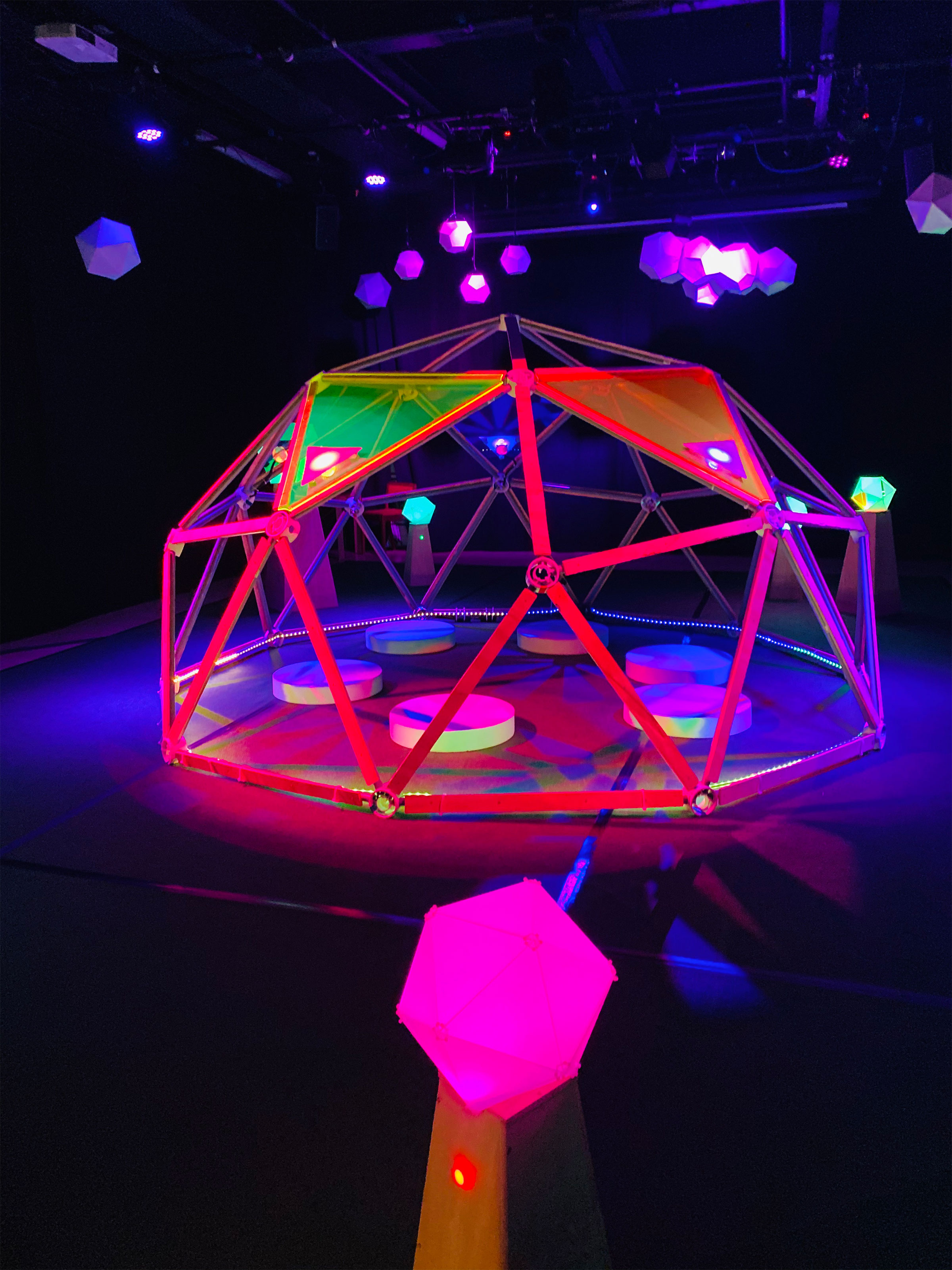
Forest Daydream
Forest Daydream (2019) merges nature with pixels in the real world, transporting you into the living soundscape of an endangered Amazonian rainforest. At its heart, an illuminated geometric dome rises among 8-bit trees, creating a playful digital wilderness that invites you to listen, explore, and connect with this vanishing ecosystem.
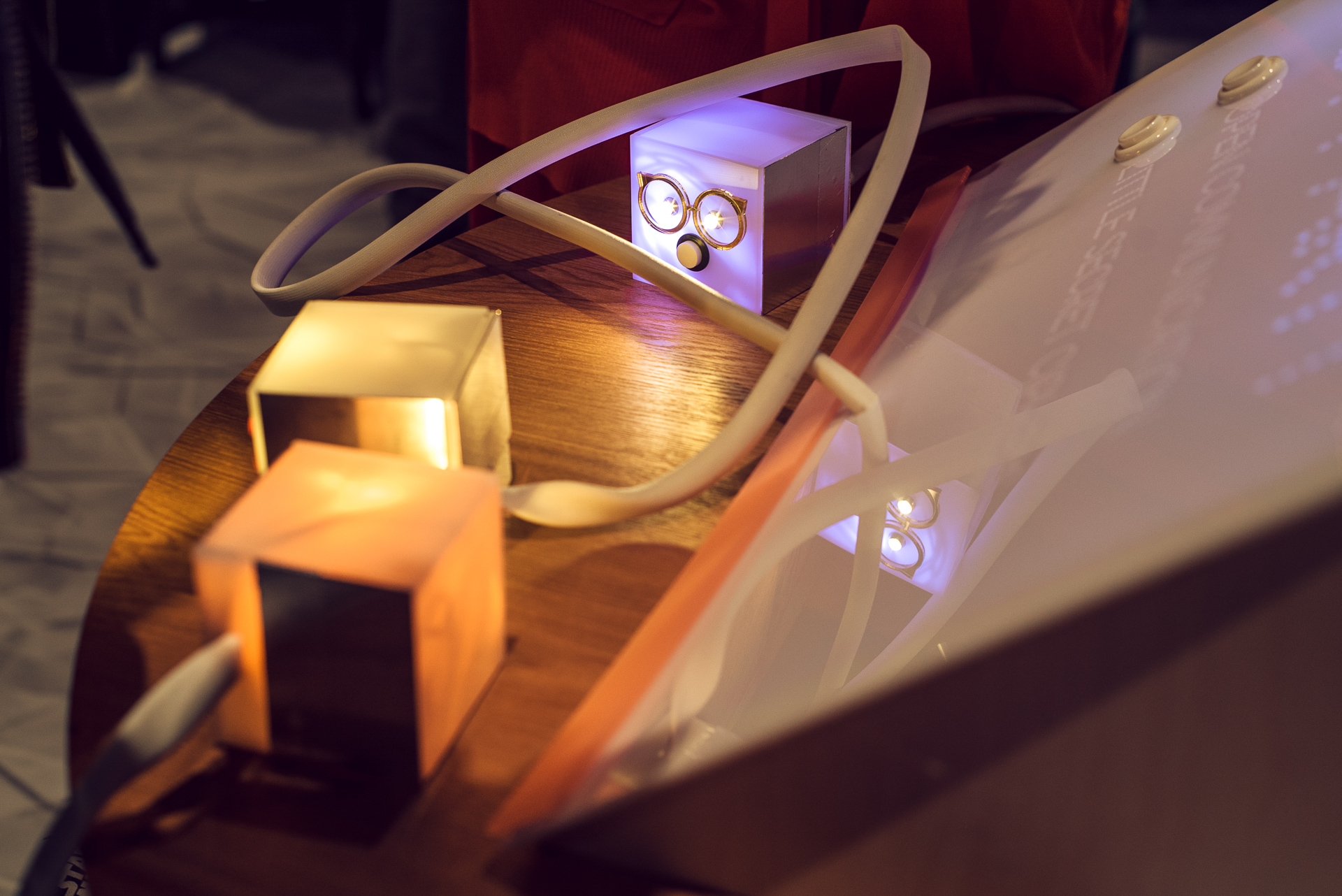
Bot Party
Bot Party (2017-2024) is an interactive sound experience created by Phoenix Perry and Charlie Ann Page that explores intimacy through physical play and human connection. In this game, participants hold small, custom-designed robots—called "bots"—and generate music by physically contacting one another. The bots utilize a unique "bot-to-skin-to-skin-to-bot communication protocol" (BSSB) to transmit encoded messages through human touch, encouraging players to hold hands or touch skin-to-skin to initiate the musical interaction.
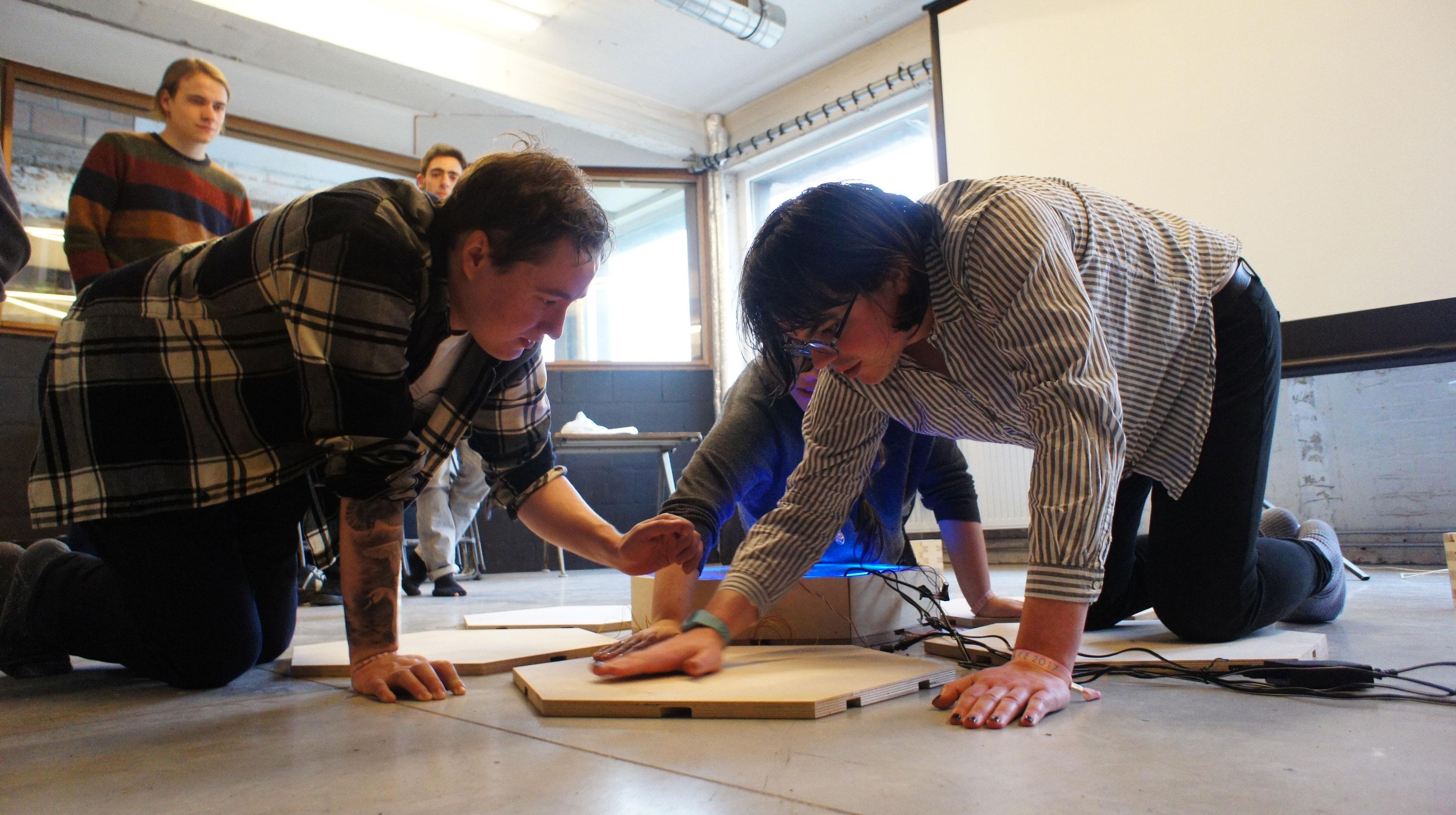
Thrum
Thrum (2017) is a wooden haptic interface featuring a grid of 28 vibration motors encircled by a wooden ring and equipped with six tactile buttons. Inspired by the waggle dance of bees—where vibrations within the hive communicate the location of food sources—it serves as a multiplayer experimental platform for exploring group communication through vibrational cues and investigating how people interpret and share vibrational information in collaborative settings.


Baby Bot
Baby Bot (2016) is an analogue synthesizer and 10-step sequencer designed for group interaction, serving as a precursor to Bot Party. In this project, Perry explores themes of human connection through collaborative play, emphasizing these ideas through a two-part interface. The design encourages players to interact with each other to create music, fostering a sense of shared creativity and connection.

Nightgames
Night Games (2013) transforms a physical space into a digitally infused, interactive environment where players can hear and experience their interconnectedness. Emphasizing collaborative play, it unveils hidden rules, goals, and systems that can only be discovered together. Whimsy, playfulness, and open-ended exploration are central to its design. Using game controllers and cameras, this living game observes and responds to the group's movements, prompting questions like, 'Does hearing the relationship of your body in space to others change how you move and interact? Does it shift your awareness?' Night Games proposes an alternative in an era where technology often distracts and distances us from physical engagement. In this world, the body is integral to the game design process, reconnecting players to their physicality and each other.
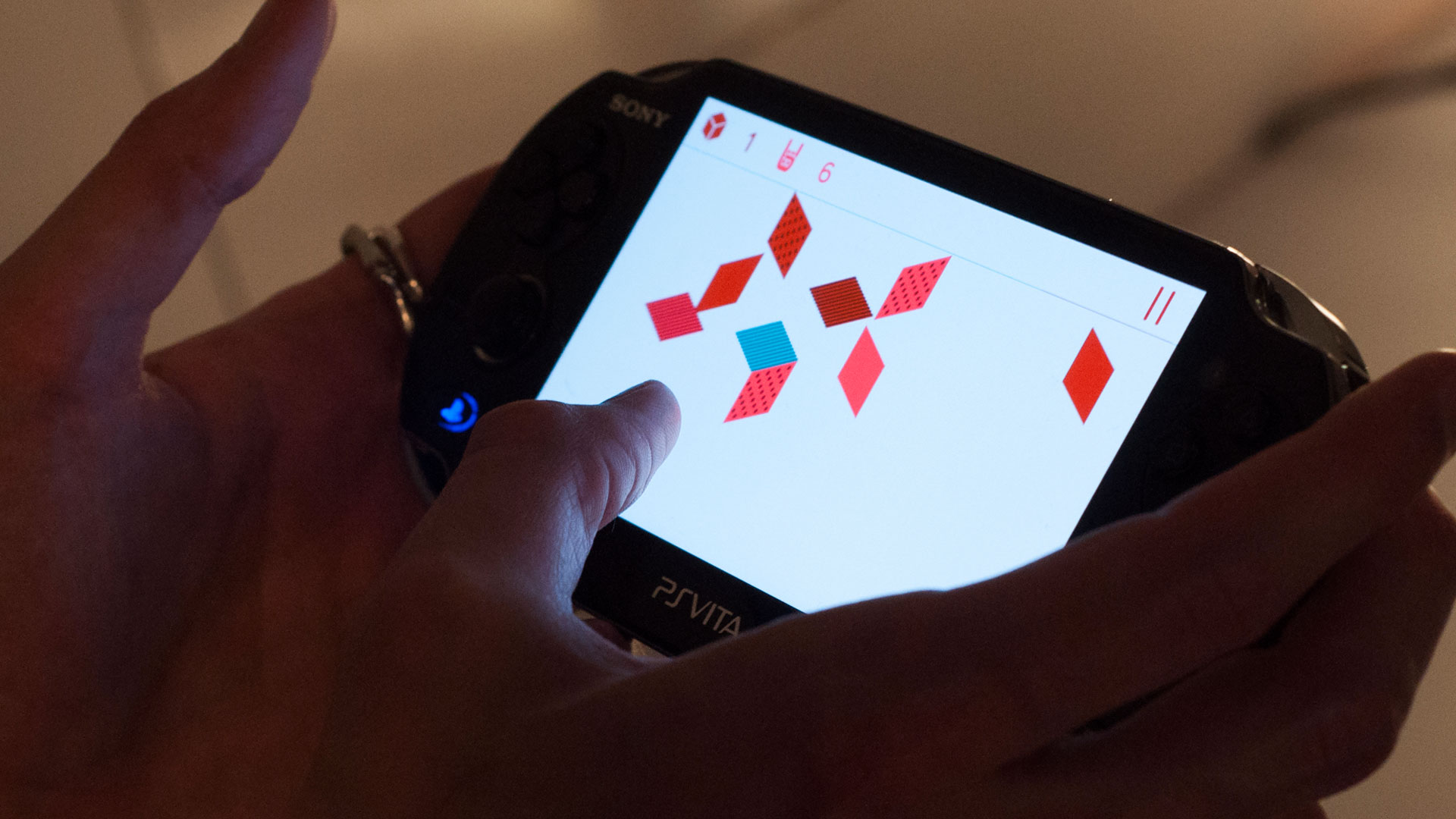
Crystallon
Crystallon (2013) is a touch-controlled match-3 puzzle game that challenges players to create isometric cubes using floating tiles. The game is guided by two simple rules: each cube face must either have all the same qualities or all different qualities, which can include color, pattern, and sound. As players progress, they encounter surprising complexity in their challenges.Players drag their fingers across the screen to group tiles into cubes, with more complex cubes earning higher points. Crystallon features three distinct modes—Puzzle, Infinite, and Timed—offering a variety of gameplay experiences. In Puzzle mode, players are encouraged to discover multiple solutions for added replayability, while Timed and Infinite modes provide endless variety with randomly generated tile sets.Originally developed in New York City by Ben Johnson, Phoenix Perry, and Margaret Schedel during the IndieCade East 2013 Game Jam, Crystallon received a promotional package as an award. After several years of development, its planned release on the PlayStation Vita was unfortunately halted when developer licenses were revoked. Despite this setback, Crystallon stands as a testament to innovative design.
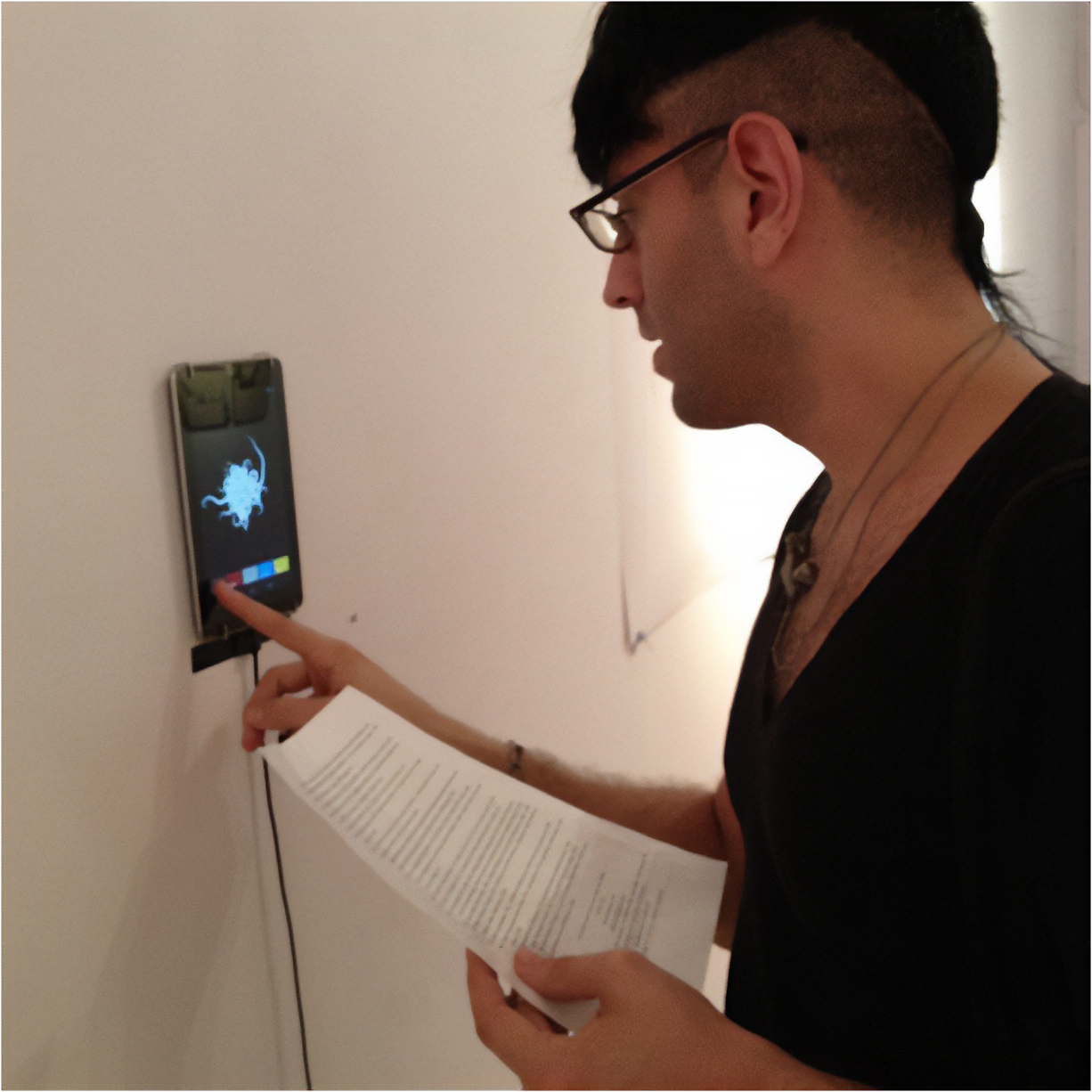
Emotional Growth
Emotional Growth (2013) is a computational art installation that invites collective care and reflection by nurturing a virtual, plant-like entity. Gallery visitors interact by feeding the plant's emotional states, influencing its growth and form based on the emotions selected in the app. Positive emotions, such as joy and love, result in longer, softer, and more curved tendrils, symbolizing flourishing and resilience. In contrast, negative emotions, like anger and fear, produce shorter tendrils with stunted branches that wither more quickly. This interaction transforms the plant into a living map of the emotional landscape shared by the gallery-goers. By visually demonstrating the impact of emotional input on the plant's well-being, the work serves as a poignant commentary on how we treat one another and how this affects growth and resilience.
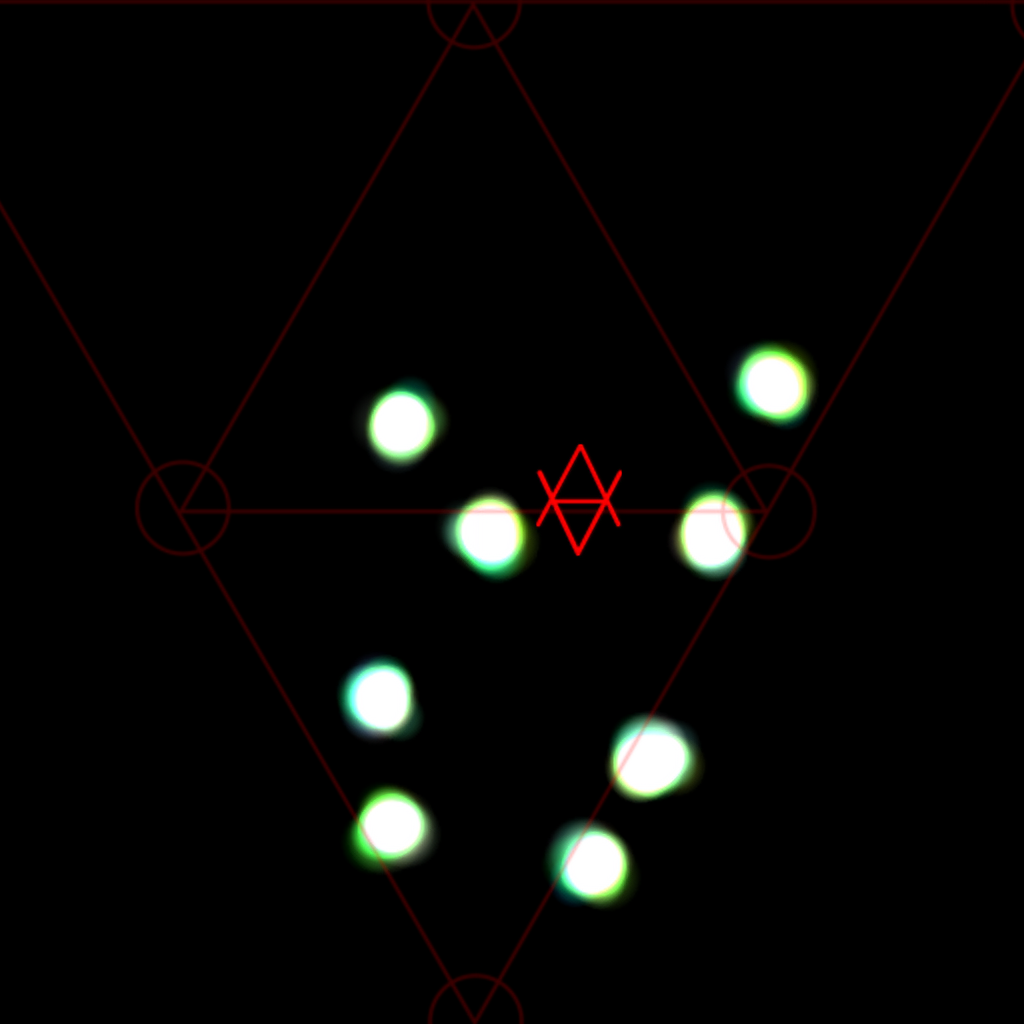
Game Over
Game Over (2011) is a two-player embodied game that combines physical interaction and social dynamics. One player controls a skeleton-tracked avatar, physically moving to avoid falling obstacles that descend from above. Each collision progressively deletes parts of their virtual body, distorting the avatar and amplifying the tension. Meanwhile, the second player uses an iOS companion app to manipulate falling objects, deciding whether to help or hinder the primary player, introducing a robust social responsibility and choice layer. By emphasizing the physicality of play, Game Over creates an emotional experience that explores fear, vulnerability, and the ethical weight of witnessing and influencing another's suffering. This innovative design challenges conventional gaming paradigms, offering players a deeply reflective journey into resilience, empathy, and the embodied experience of shared adversity.
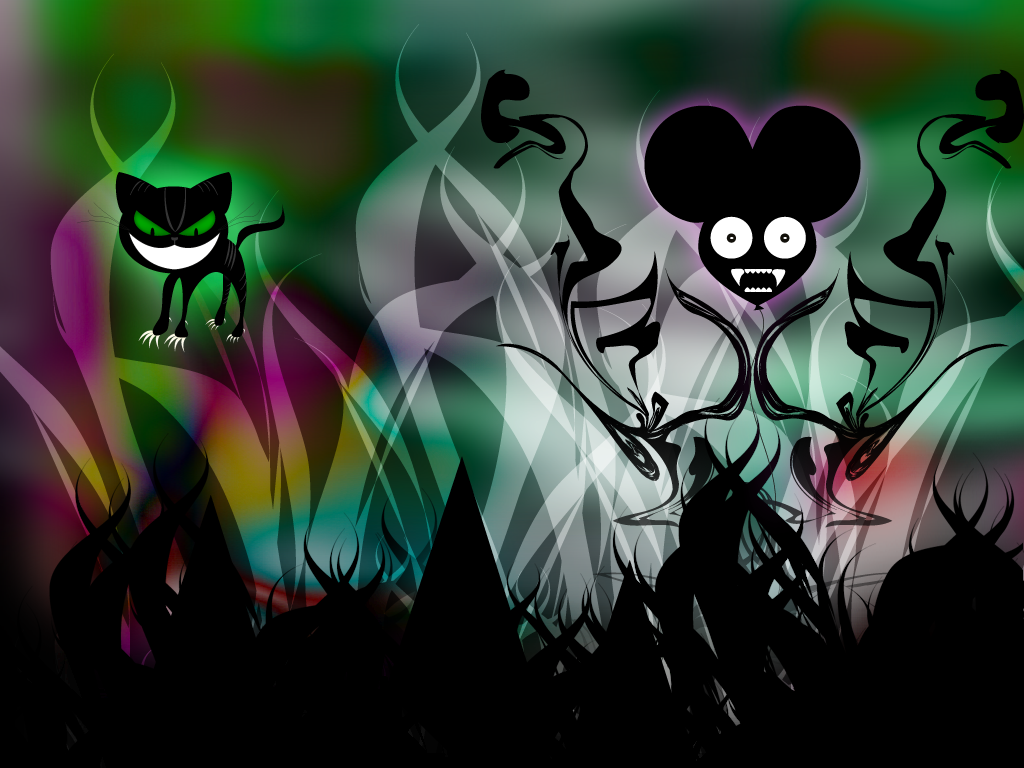
Nightmare Kitty
Nightmare Kitty (2011) is an endlessly side-scrolling game where players embody a balloon-like mouse avatar, navigating a dark and surreal environment to escape falling cats. Using skeleton tracking, players move their avatars to avoid collisions while strategically landing on cats to pop them. Each hit reduces the player's chances of survival, and after five hits, the balloon bursts, ending the game. The game blends whimsical visuals with a gothic tone, creating a playful yet tense atmosphere. Inspired by classic arcade mechanics, Nightmare Kitty challenges players to survive as long as possible while navigating themes of vulnerability and resilience. The gameplay dynamically moves through high-power and low-power positions, positioning the player as hunter and hunted, evoking a spectrum of emotions from triumph to tension. With its chaotic and lighthearted aesthetic, Nightmare Kitty offers a uniquely engaging and playful experience.
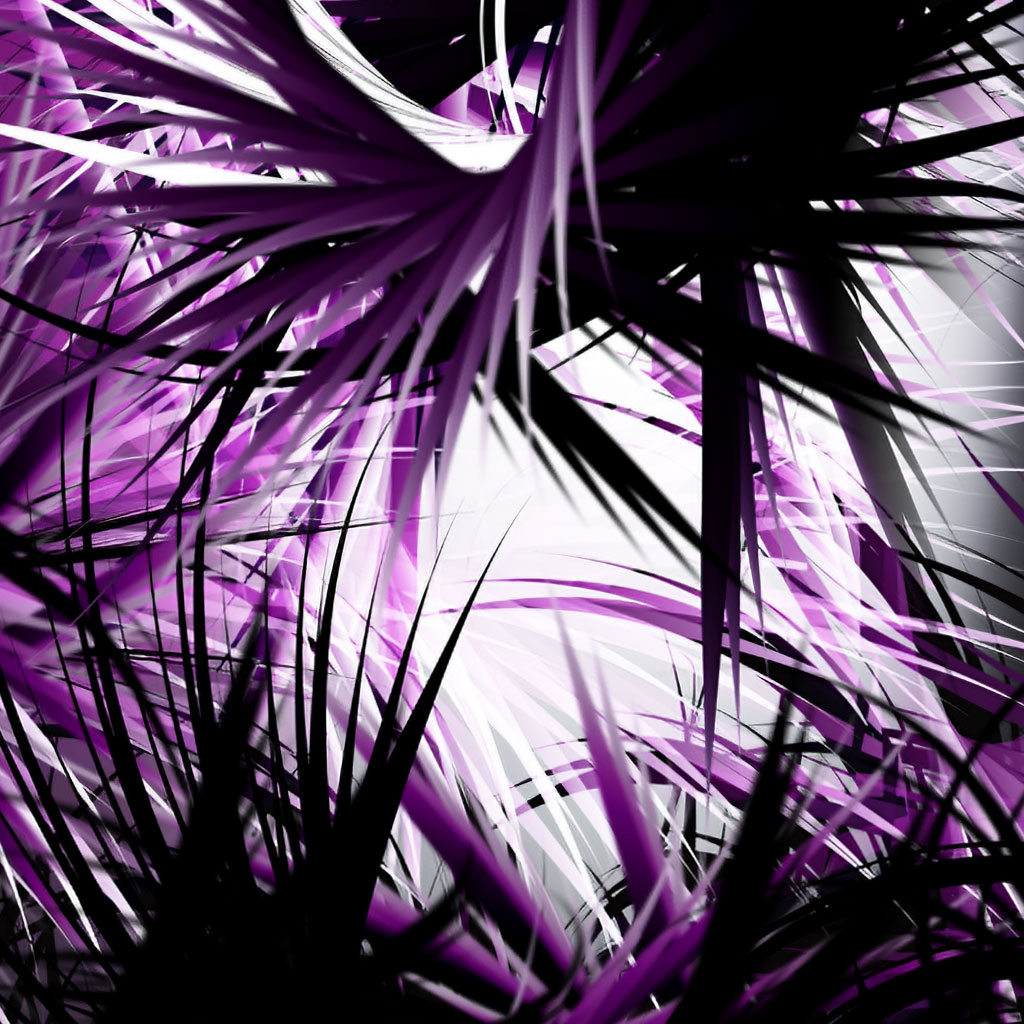
Lost in the Forest
Lost in The Forest (2010) is a multimedia piece that delves into abstraction, generative drawing, and augmented reality (AR). Presented as a three-part triptych, it pairs digital prints with AR markers that overlay dynamic digital elements onto the original artworks. This interplay between static and augmented visuals creates a layered experience that blurs the lines between the tangible and the virtual. The drawings themselves explore organic forms inspired by patterns found in nature and the human body. These forms interact in a dynamic visual dialogue, evoking themes of interconnectedness, transformation, and the tension between structure and fluidity. The AR component extends this exploration, animating the conversation between the physical and the digital, as an aerialist interacts with the forms in the AR experience.
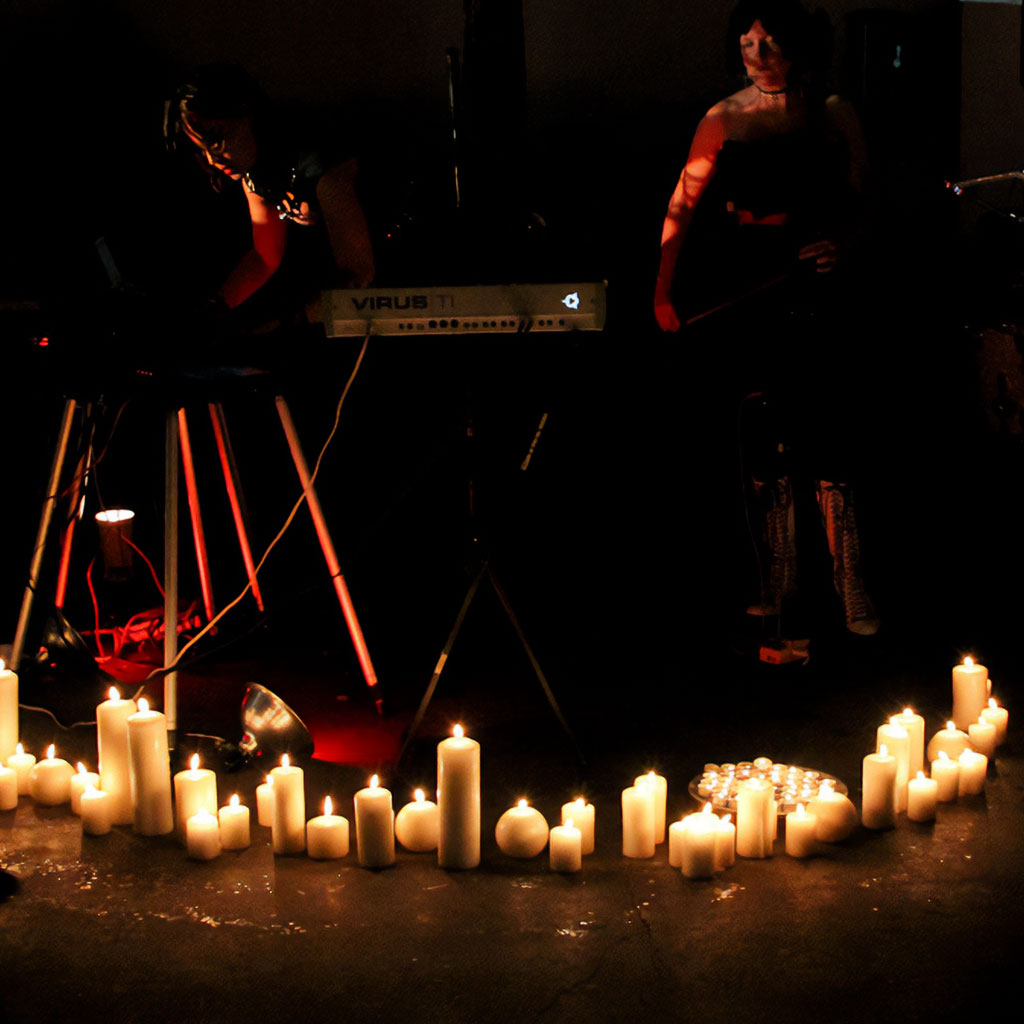
#000000Swan
#000000Swan is a live multimedia performance that combines music, visuals, and gesture-driven interaction through advanced technology and machine learning. The performance utilizes various innovative tools, including Wekinator for interactive machine learning, the K-Bow sensor bow, Microsoft Kinect, and platforms like Unity and Ableton Live. These technologies allow performers to manipulate audio and visuals seamlessly through body movements, bow articulations, and other sensor inputs, creating a dynamic and responsive experience.With an aesthetic rooted in myth, tribal rhythms, and abstraction, #000000Swan explores the relationship between gesture, sound, and visuals. Machine learning models enable performers to generate complex mappings between inputs and outputs, resulting in unique combinations of discrete and continuous interactions. By merging cutting-edge technology with artistic expression, Swan challenges traditional performance paradigms and provides audiences with a multisensory, experimental experience.